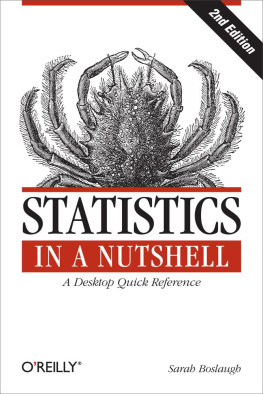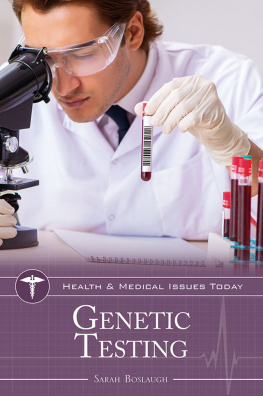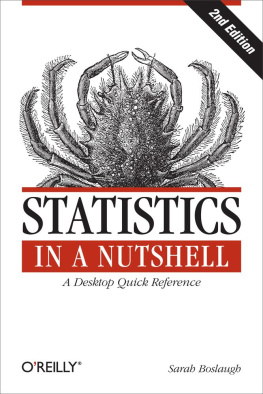Boslaugh - Drug Resistance
Here you can read online Boslaugh - Drug Resistance full text of the book (entire story) in english for free. Download pdf and epub, get meaning, cover and reviews about this ebook. City: Santa Barbara;California, year: 2017, publisher: ABC-CLIO, LLC;Greenwood, genre: Politics. Description of the work, (preface) as well as reviews are available. Best literature library LitArk.com created for fans of good reading and offers a wide selection of genres:
Romance novel
Science fiction
Adventure
Detective
Science
History
Home and family
Prose
Art
Politics
Computer
Non-fiction
Religion
Business
Children
Humor
Choose a favorite category and find really read worthwhile books. Enjoy immersion in the world of imagination, feel the emotions of the characters or learn something new for yourself, make an fascinating discovery.

Drug Resistance: summary, description and annotation
We offer to read an annotation, description, summary or preface (depends on what the author of the book "Drug Resistance" wrote himself). If you haven't found the necessary information about the book — write in the comments, we will try to find it.
Drug Resistance — read online for free the complete book (whole text) full work
Below is the text of the book, divided by pages. System saving the place of the last page read, allows you to conveniently read the book "Drug Resistance" online for free, without having to search again every time where you left off. Put a bookmark, and you can go to the page where you finished reading at any time.
Font size:
Interval:
Bookmark:
Recent Titles in
Health and Medical Issues Today
Medicare
Jennie Jacobs Kronenfeld
Illicit Drugs
Richard E. Isralowitz and Peter L. Myers
Animal-Assisted Therapy
Donald Altschiller
Alcohol
Peter L. Myers and Richard E. Isralowitz
Geriatrics
Carol Leth Stone
Plastic Surgery
Lana Thompson
Birth Control
Aharon W. Zorea
Bullying
Sally Kuykendall, PhD
Steroids
Aharon W. Zorea
Suicide and Mental Health
Rudy Nydegger
Cutting and Self-Harm
Chris Simpson
Discrimination Against the Mentally Ill
Monica A. Joseph
Concussions
William Paul Meehan III
Copyright 2017 by ABC-CLIO, LLC
All rights reserved. No part of this publication may be reproduced, stored in a retrieval system, or transmitted, in any form or by any means, electronic, mechanical, photocopying, recording, or otherwise, except for the inclusion of brief quotations in a review, without prior permission in writing from the publisher.
Library of Congress Cataloging-in-Publication Data
Names: Boslaugh, Sarah.
Title: Drug resistance / Sarah E. Boslaugh.
Description: Santa Barbara, California : Greenwood, an imprint of ABC-CLIO, LLC, [2017] | Series: Health and medical issues today | Includes bibliographical references and index.
Identifiers: LCCN 2016038910 (print) | LCCN 2016041055 (ebook) | ISBN 9781440839245 (hard copy : alk. paper) | ISBN 9781440839252 (ebook)
Subjects: LCSH: Drug resistance. | Antibiotics.
Classification: LCC QR177 .B67 2017 (print) | LCC QR177 (ebook) | DDC 616.9/041dc23
LC record available at https://lccn.loc.gov/2016038910
ISBN: 978-1-4408-3924-5
EISBN: 978-1-4408-3925-2
21 20 19 18 17 1 2 3 4 5
This book is also available as an eBook.
Greenwood
An Imprint of ABC-CLIO, LLC
ABC-CLIO, LLC
130 Cremona Dr., P.O. Box 1911
Santa Barbara, CA 93116-1911
www.abc-clio.com
This book is printed on acid-free paper 
Manufactured in the United States of America
This book is dedicated to my colleagues, students, and professors, because science is truly a collaborative endeavor.
C ONTENTS
S ERIES F OREWORD
Every day, the public is bombarded with information on developments in medicine and healthcare. Whether it is about the latest techniques in treatment or research, or concerns over public health threats, this information directly affects the lives of people more than almost any other issue. Although there are many sources for understanding these topicsfrom Web sites and blogs to newspapers and magazinespeople often need one resource that makes sense of the complex health and medical issues affecting their daily lives.
The Health and Medical Issues Today series provides just such a one-stop resource for obtaining a solid overview of the most controversial areas of healthcare in the 21st century. Each volume addresses one topic and provides a balanced summary of what is known. These volumes provide an excellent first step for students and laypeople interested in understanding how healthcare works in our society today.
Each volume is broken into several sections to provide readers and researchers with easy access to the information they need:
- provides overview chapters on background information, including chapters on such areas as the historical, scientific, medical, social, and legal issues involvedthat a citizen needs to intelligently understand the topic.
- provides capsule examinations of the most heated contemporary issues and debates and analyzes in a balanced manner the viewpoints held by various advocates in the debates.
- provides a selection of reference materials, such as annotated primary source documents, a timeline of important events, and a directory of organizations that serve as the best next step in learning about the topic at hand.
The Health and Medical Issues Today series strives to provide readers with all the information needed to begin making sense of some of the most important debates going on in the world today. The series includes volumes on such topics as stem-cell research, obesity, gene therapy, alternative medicine, organ transplantation, mental health, and more.
A CKNOWLEDGMENTS
Much of the information incorporated in this book comes from data collected and reported by governmental organizations such as the Centers for Disease Control and Prevention (CDC), and from the World Health Organization (WHO), an agency of the United Nations. Without their tireless work, our ability to understand key medical and health issues would be far less than it is today.
I NTRODUCTION
Modern medicine is able to cure or contain many diseases that posed a serious threat to human life less than a century ago. Many of these great breakthroughs were made possible by the development of new drugs, including antibiotics such as penicillin and streptomycin, that were rightly hailed as miracle drugs when first introduced into medical use. Other drugs have been developed that are effective against diseases caused by means other than bacteria, such as malaria, which is caused by infection with a parasite, and acquired immune deficiency syndrome (AIDS), which is caused by a viral infection.
However, these gains can be lost when disease-causing microorganisms (e.g., bacteria and viruses) become resistant to drugs that formerly had been effective against them. Often, a microorganism that develops resistance to one drug remains susceptible to one or more other drugs, but as more and more microorganisms become resistant to more and more drugs, the possibility increases for the emergence of microorganisms against which medical science has no effective remedy. This possibility is furthered by the fact that the rate of discovery of new antibiotics today is much slower than in the 1940s and 1950s, a period sometimes referred to as the golden age of antibiotics discovery . Finally, even if alternatives exist to treat drug-resistant organisms, these drugs are often more expensive and less readily available, and they also may have more serious side effects than the drugs that had been effective against the same organisms.
According to the World Health Organization (WHO), high rates of resistance to drugs ordinarily used to treat diseases caused by common types of bacteria have been observed in all WHO regions. Among disease-causing agents that have developed resistance to drugs formerly effective against them, those of greatest concern include Escherichia coli , which can cause serious infections in the bloodstream and urinary tract; Klebsiella pneumoniae , which can cause pneumonia, meningitis, and infections in wounds, the bloodstream, and the urinary tract; Staphylococcus aureus , which can cause infections of the skin, respiratory tract, bloodstream, and urinary tract; Streptococcus pneumoniae , which can cause pneumonia, meningitis, and otitis media (inner ear inflammation); Salmonella , which can cause food poisoning; Shigella , which can cause severe diarrhea and dysentery; and Neisseria gonorrhoeae , which causes the sexually transmitted disease gonorrhea.
Specific diseases for which drug resistance is of particular concern include tuberculosis (TB), which kills about 1.5 million people globally each year; malaria, which kills over 600,000 people annually, with an estimated 207 million seeking treatment each year; AIDS, which kills about 1.5 million people each year; and influenza, which kills 250,000 to 500,000 people annually. The death toll of these diseases would be even higher, of course, if the microorganisms causing them became resistant to the drugs available to treat them.
In part, the development of drug resistance is a natural process driven by selection pressure, but it may also be fostered by the way that antibiotics and other drugs are used. The emergence of drug-resistant strains of disease-causing microorganisms is often observed almost as soon as the drugs are used. For instance, streptomycin was introduced to medical care in 1946 as the first antibiotic effective against in treating TB patients; the same year, streptomycin-resistant strains of TB were found.
Next pageFont size:
Interval:
Bookmark:
Similar books «Drug Resistance»
Look at similar books to Drug Resistance. We have selected literature similar in name and meaning in the hope of providing readers with more options to find new, interesting, not yet read works.
Discussion, reviews of the book Drug Resistance and just readers' own opinions. Leave your comments, write what you think about the work, its meaning or the main characters. Specify what exactly you liked and what you didn't like, and why you think so.




